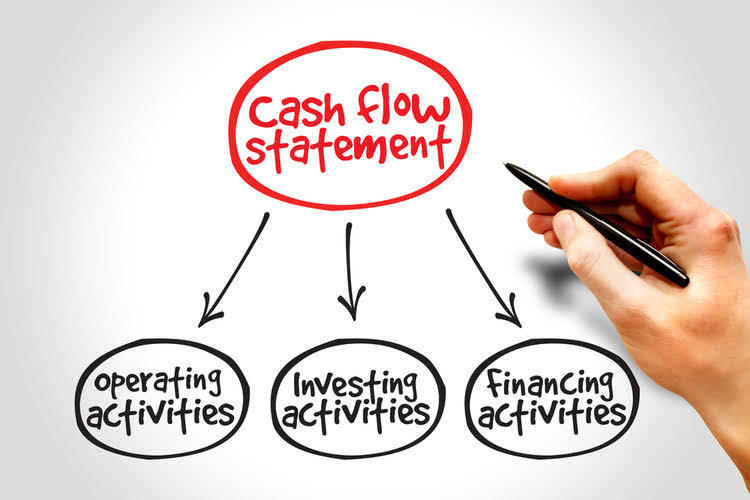
ROE is sometimes used to estimate how efficiently a company’s management is able to generate profit with the assets they have available. Return On Equity, or ROE, is a measurement of financial performance arrived at by dividing net income by shareholder equity. Shareholder equity is one of the important numbers embedded in the financial reports of public companies that can help investors come to a sound conclusion about the real value of a company. During a liquidation process, the value of physical assets is reduced and there are other extraordinary conditions that make the two numbers incompatible. This is the percentage of net earnings that is not paid to shareholders as dividends. Suitable asset allocation will help businesses grow, resulting in a higher amount of money from stock purchasers and ETF managers.
How Do You Calculate Equity in a Private Company?
- Put another way, it is the amount that would remain if the company liquidated all of its assets and paid off all of its debts.
- Stockholders’ equity is also referred to as shareholders’ or owners’ equity.
- Our team of reviewers are established professionals with decades of experience in areas of personal finance and hold many advanced degrees and certifications.
- It is the difference between shares offered for subscription and outstanding shares of a company.
- This reverse capital exchange between a company and its stockholders is known as share buybacks.
Negative brand equity is rare and can occur because of bad publicity, such as a product recall or a disaster. As part of Apple’s 2023 report, the company listed $62.146 billion of shareholder equity. As of September 30, 2023 (the date listed on the company’s 2023 annual report), the company had an accumulated deficit of $214 million. The company also total equity formula reported an accumulated other comprehensive loss of $11.4 billion. Once you have the current market value of your home, subtract the amount you still owe on your home mortgage and related loans from the estimate. Successful investors look well beyond today’s stock price or this year’s price movement when they consider whether to buy or sell.
- Company expenses, such as salaries, office supplies, and rent, fall under this category.
- If the same assumptions are applied for the next year, the end-of-period shareholders equity balance in 2022 comes out to $700,000.
- This formula works regardless of whether you’re a Fortune 500 company or a one-person show with a side hustle.
- In an LBO transaction, a company receives a loan from a private equity firm to fund the acquisition of a division of another company.
Return on Equity
Average equity is calculated by adding the equity at the beginning of the year to the equity at the end of the year and dividing the total by 2. As mentioned earlier, you can also use SE with other financial metrics or ratios to accurately determine whether a company is a wise investment. Accounts receivable list the amounts of money owed to the company by its customers for the sale of its products. Assets include cash and cash equivalents or liquid assets, which may include Treasury bills and certificates of deposit (CDs). Founded in 1993, The Motley Fool is a financial services company dedicated to making the world smarter, happier, and richer. This gives you a real insight into the value and ongoing profitability of your business.
- On the balance sheet, shareholders’ equity is broken up into three items – common shares, preferred shares, and retained earnings.
- Calculating equity is essential when propositioning investors for more funding and advising your shareholders.
- Return on equity (ROE) is a measure of financial performance calculated by dividing net income by shareholder equity.
- For example, if you are launching a new product or service, you can observe changes in equity by generating financial statements through the software.
Would you prefer to work with a financial professional remotely or in-person?
They include investments; property, plant, and equipment (PPE), and intangibles such as patents. If the company ever needs to be liquidated, SE is the amount of money that would be returned to these owners after all other debts are satisfied. Shareholder equity represents the total amount of capital in a company that is directly linked to its owners. If ROE is very high, then the firm has been doing exceptionally well in making profits with just a little capital invested. However, if it is low, then there might be something wrong with the decision making and the firm is not using its assets optimally.
Generate financial statements, such as balance sheets, income statements, and cash flow statements, whenever you need them. What remains after deducting total liabilities from the total assets is the value that shareholders would get if the assets were liquidated and all debts were paid up. For example, if the assets are liquidated in a negative shareholder equity situation, all assets will be insufficient to pay all of the debt, and shareholders will walk away with nothing.

What Are the 3 Elements of the Accounting Equation?
- The accounting equation helps to assess whether the business transactions carried out by the company are being accurately reflected in its books and accounts.
- When an investment is publicly traded, the market value of equity is readily available by looking at the company’s share price and its market capitalization.
- Financial analysts use stockholders’ equity with the company’s financial statements to determine a firm’s valuation.
- When calculating shareholders’ equity using either of the below two formulas, it’s essential to add up all of these components when calculating the total asset value of a firm.
- Treasury stocks are repurchased shares of the company that are held for potential resale to investors.
- As such, many investors view companies with negative equity as risky or unsafe.
Here’s why I’m sharing my startup’s business data on LinkedIn, what data specifically, and how it has benefited my startup – and could benefit your company, too. We put together a list of the best, most profitable small business ideas for entrepreneurs to pursue in 2024. The global adherence to the double-entry accounting system makes the account-keeping and -tallying processes more standardized and foolproof.

How do I calculate Return on Equity?

Read on to learn more about owner’s equity, how it’s calculated, and what’s included in the calculation. Shares are small pieces of your company that are worth a certain dollar value. If you total up the value of all the shares you own, that’s your total stock in the company. In this case, it’s just the value of all your assets (cash, equipment, etc.) minus all your liabilities .
Accounting Equation: What It Is and How You Calculate It
Liabilities are obligations that the company owes to external parties, such as loans, accounts payable, and accrued expenses. Equity represents the residual claim on assets after satisfying liabilities. A company can pay for something by either taking out debt (i.e. liabilities) or paying for it with money they own (i.e. equity).
Common Stock and APIC Calculation Example
Get instant access to video lessons taught by experienced investment bankers. Learn financial statement modeling, DCF, M&A, LBO, Comps and Excel shortcuts. Here, we’ll assume $25,000 in new equity was raised from issuing 1,000 shares at $25.00 per share, but at a par value of $1.00.
Why Is Company Equity Important?
This formula can give a slightly more accurate picture of what shareholders may expect if forced/decided to liquidate a company or exit. However, you can use both formulas to calculate equity for shareholders equally well. Noncurrent or long-term assets you can’t convert into cash in the same timeframe, such as patents, property and plant and equipment (PPE). When calculating shareholders’ equity using either of the below two formulas, it’s essential to add up all of these components when calculating the total asset value of a firm. The accounting equation is also called the basic accounting equation or the balance sheet equation. Company expenses, such as salaries, office supplies, and rent, fall under this category.
Leave a Reply